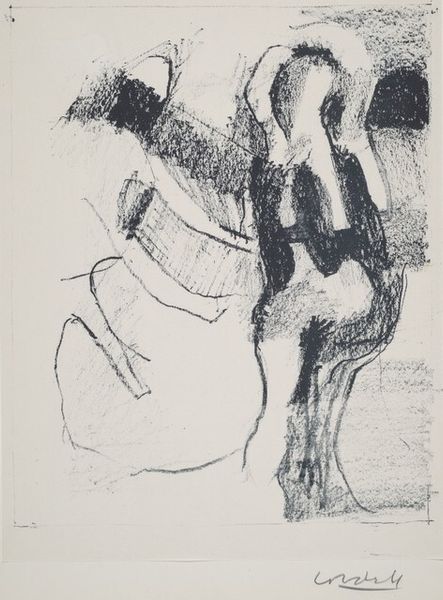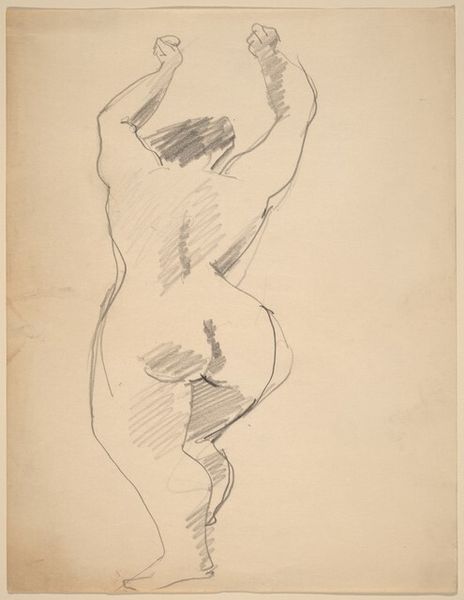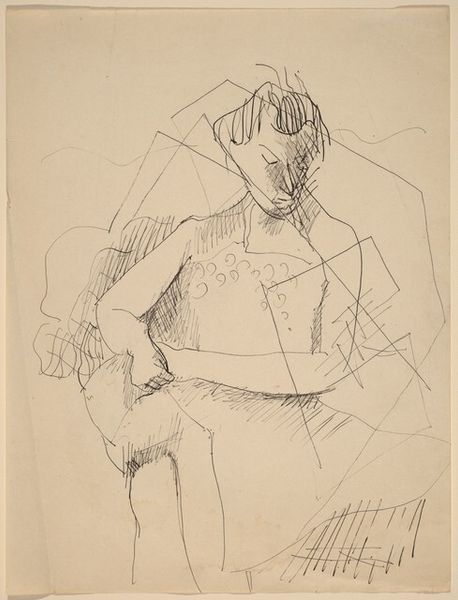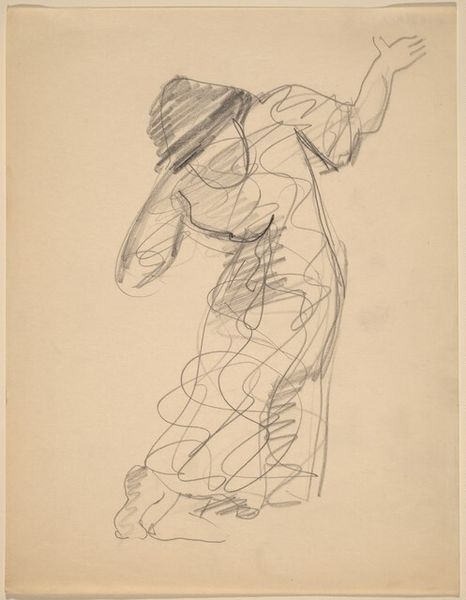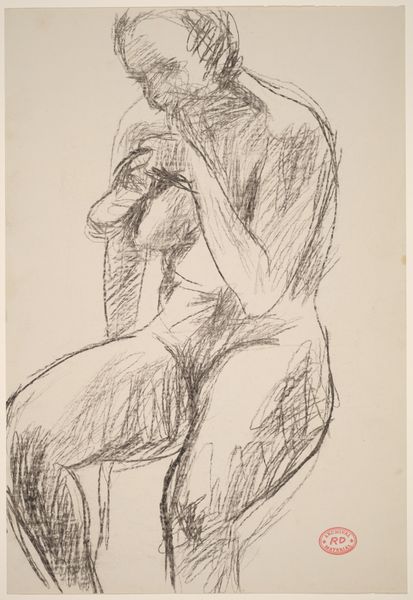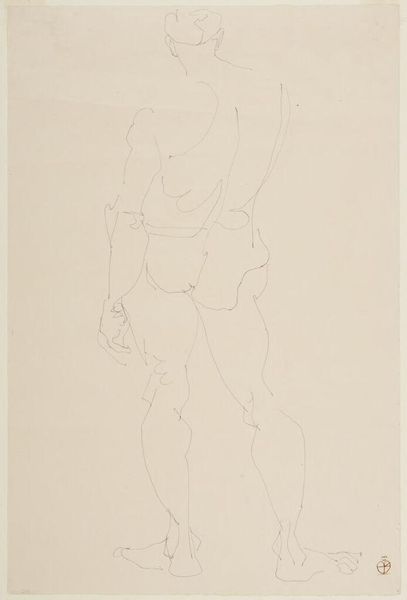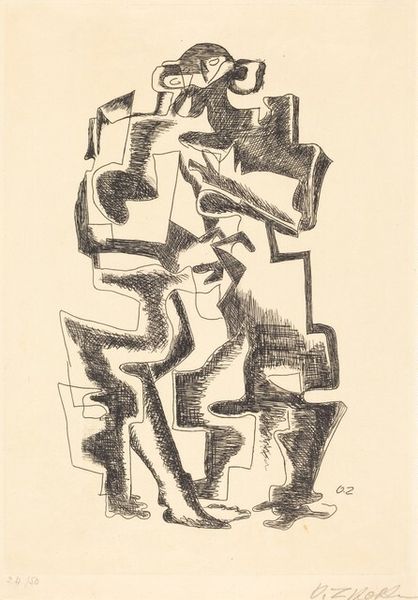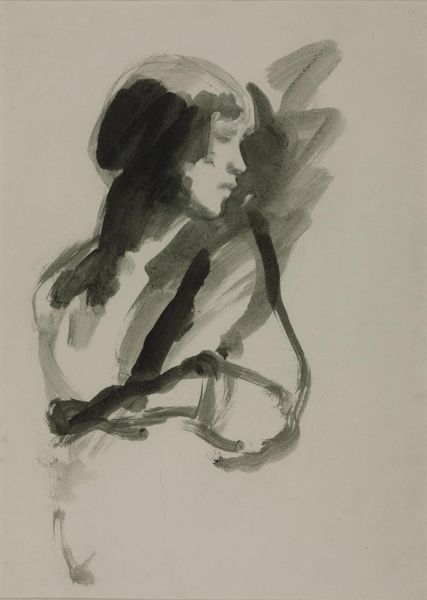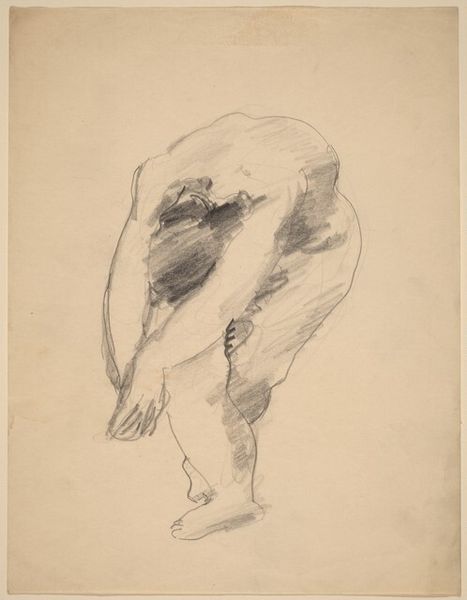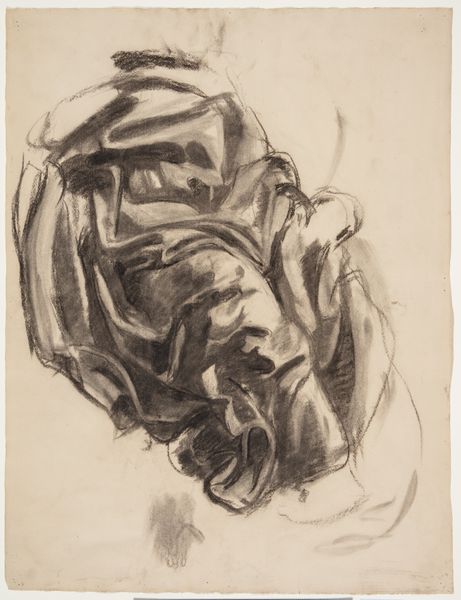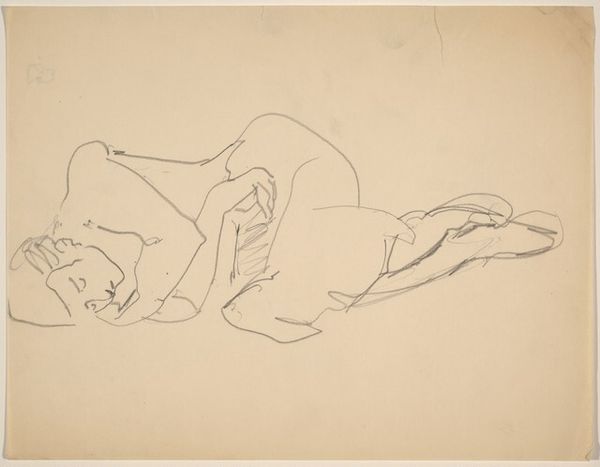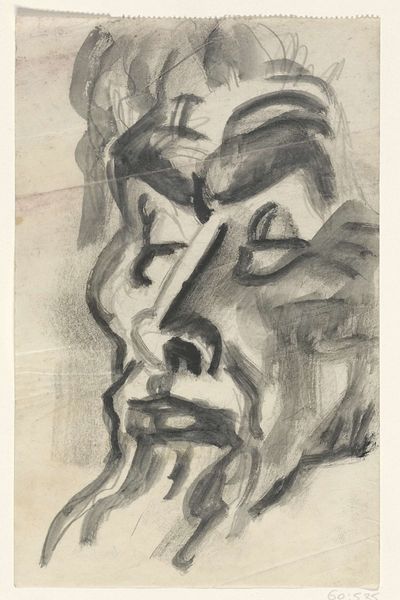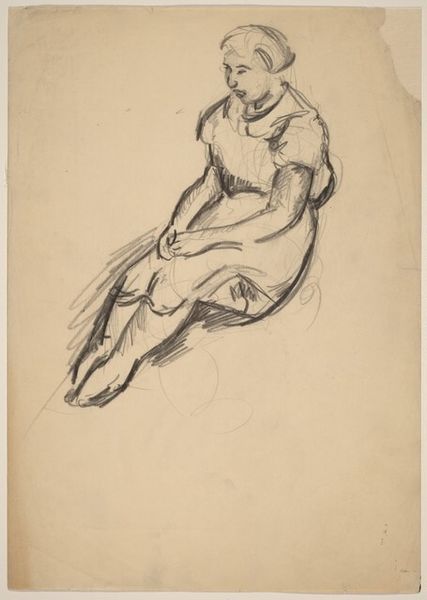
drawing, pencil, graphite
#
drawing
#
form
#
pencil
#
abstraction
#
line
#
graphite
Dimensions: overall: 12.7 x 9.5 cm (5 x 3 3/4 in.)
Copyright: National Gallery of Art: CC0 1.0
Editor: So here we have Louis Lozowick's "Large Boulder," a pencil and graphite drawing. It looks almost like an unfinished study. What's your take on it? Curator: It's fascinating precisely because it's seemingly unfinished. I immediately think of the material realities behind its creation. What kind of graphite was used? What was the texture of the paper like? Was it mass-produced or handmade, impacting the drawing's reception? Editor: That's a good point! The weight and texture of those materials definitely change how we view it. Do you think it being unfinished relates to its value as art? Curator: Absolutely. Its perceived incompleteness shifts our focus from the final image to the *process* of making. We start considering the artist's labor, their deliberate marks and erasures, and the social contexts informing those actions. Think about Lozowick's position as an artist navigating different social currents... how did his surroundings inform the pressure on artmaking as labor? Editor: I never really thought about a pencil sketch in terms of labour and production like that before. It also makes me wonder whether sketches are simply means to ends, or can exist in and of themselves. Curator: Precisely. It challenges those traditional hierarchical boundaries, doesn't it? Is the sketch simply a disposable preliminary step, or does it possess intrinsic value by capturing a fleeting moment in the artist's working process, informed by their relationship with materials? What gets elevated as 'art' and who makes those decisions? Editor: This makes me see the value of sketches, even outside of finished drawings and paintings, in a completely new light. Curator: Agreed. By focusing on the materials and process, we gain a deeper understanding of the choices the artist made, as well as how material and economic considerations played a part in its creation, and ultimately our reception of the work itself.
Comments
No comments
Be the first to comment and join the conversation on the ultimate creative platform.
